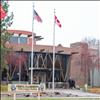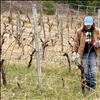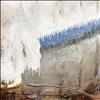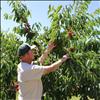his year’s wildfire season has been chill so far. Why?
Even in the midst of a widening, deepening drought, far fewer acres have burned in Montana than land managers anticipated. But things could change soon.
Hey savvy news reader! Thanks for choosing local.
You are now reading
1 of 3 free articles.
The fire season in Montana this year was supposed to be intense. At the governor’s 2025 fire season briefing in early June, a predictive meteorologist cautioned that the state’s multi-year drought, expected hot temperatures and anticipated dry conditions could paint a grim picture for fires this summer.
However, despite a similar number of fire starts relative to last year (1,116 on July 21, 2025, as compared to 1,069 by July 21, 2024), fires this summer have burned fewer acres. Last year, nearly 92,000 acres had burned across the state by July 21. This year, that figure is just shy of 17,000 acres, which represents an 80% reduction.
According to Dan Borsum, the predictive meteorologist for the Northern Rockies Coordination Center, precipitation-laden storms from the Northwest are responsible for much of that decrease.
“ They’ve been moisture-producers,” Borsum said in a recent interview. “ It certainly has caused the landscape to trend a little bit less favorable towards fire activity.”
Some of the state’s recent afternoon thunderstorms have hit — with surprising accuracy — areas that need moisture the most.
“We’ve kind of surgically inserted the moisture into these different locations, which were looking to be developing hotspots,” he said. “This rain just keeps putting that potential at bay.”
Still, Montana’s fire season historically picks up in late July and August. Last week Cory Calnan, acting Fire Protection Bureau chief for the Montana Department of Natural Resources and Conservation, told the Montana Drought and Water Supply Advisory Committee that the upcoming conditions are “stacking up to be a challenging fire season.”
One contributing factor is anticipated hot weather. Borsum said Montanans can expect higher temperatures this weekend and onward. Calnan said these warming conditions and potential reduction in rainfall could increase the fire risk for central and eastern Montana in particular.
“We wholly expect that part of the state to become more active in the fire game,” he said at the July 16 drought meeting.
Montana’s persistent drought also favors increased fire activity. As of July 15, 66% of the state is experiencing drought and another 12% is abnormally dry, according to the U.S. Drought Monitor. Recent rainfall, though good for hampering wildfires, hasn’t improved drought conditions much.
These rains have “really helped in the live, grassy, herbaceous fuels and in keeping those green … but the real heavy fuels that we’re concerned about, mostly in our timber, are not in good shape,” Calnan said. Dry, overgrown forests remain a significant concern for fires across the state this season.
Fire agencies throughout the state are also keeping an eye on firefighting efforts across the country to assess the availability of firefighters, airplanes, helicopters and other fire suppression resources.
“The Northern Rockies geographic area, and specifically Montana, tend to come into peak fire season later than many other parts of the western U.S.,” Calnan wrote in a recent email to the Montana Free Press. “If those areas are already stretched thin, it may become more difficult to bring in additional support for Montana. Keeping an eye on regional trends helps us stay ahead of potential challenges.”
Other states across the West, such as California, Utah, and Arizona, have been busy battling major conflagrations as dry, windy weather takes hold. Still, Montana might continue to benefit from wet conditions for at least a few more days.
“As we go into this weekend, into the month of August, it looks like we will see the temperatures turn hotter. However, the pattern does look like it’s gonna have a fair amount of moisture,” Borsum said.
This precipitation will continue to keep overnight humidity high and grassy vegetation wet. But it’s hard to know how long this moisture will persist, Borsum cautioned.The warmth and dryness of August and September, paired with potential fire starts from abandoned campfires, agricultural harvesting and related equipment fire triggers, give the 2025 fire outlook ongoing potential for large burns.















